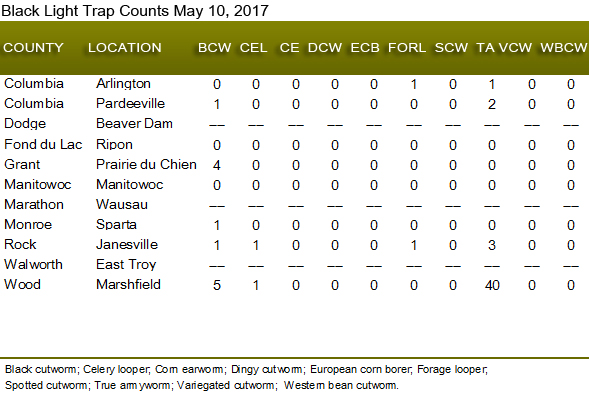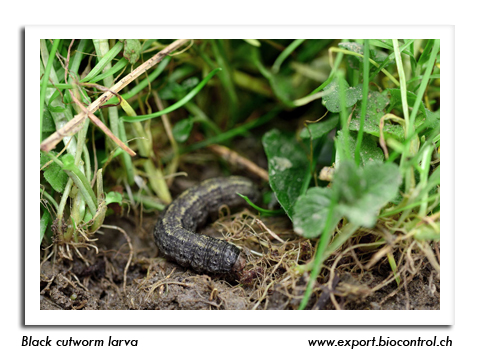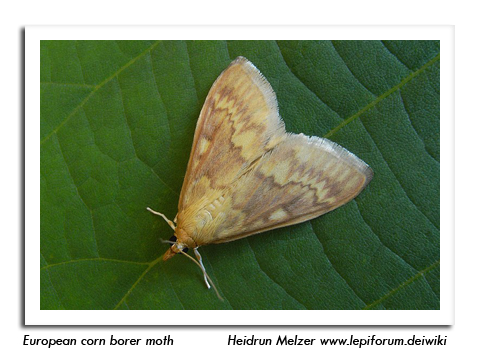
 |
|
|
Corn
Volume 62 Number 3 Date 05/11/2017 BLACK CUTWORM - Larvae resulting from the spring migration are expected to reach the destructive late-instar corn cutting stages by May 21. Based on the substantial April-May moth flights and widespread planting delays, much of the state's corn acreage is considered to be at higher risk of infestation this season. Outbreaks of this corn and vegetable pest are sporadic but generally develop in years such as this one, when spring weather patterns favor large migrations into the state, and cool, damp conditions delay planting and weed control. Cornfields with preexisting winter annual weed infestations and those affected by spring flooding should be closely monitored following emergence for early signs of cutworm activity. Summarized in the map below are cumulative black cutworm counts for the period of March 26-May 10. The spring trapping survey has so far captured 1,744 moths in 45 traps, with a high individual count of 177 moths near Juneau in Dodge County. The last time the annual trapping survey documented a spring moth migration this large was in 2012, when 1,684 moths had been captured in 31 traps by mid-May. Approximately 1,400 moths in 43 traps had been collected by this time last year. EUROPEAN CORN BORER - A few early spring adults could emerge late next week in locations such as Beloit, La Crosse and Spring Green where the 374 degree days (modified base 50°F) required for corn borer flight to begin are likely to be surpassed over the weekend of May 20-21. Black light trappers are advised to carefully examine trap contents during the next two weeks for the first spring moths. -- Krista Hamilton, DATCP Entomologist 




|
|
|